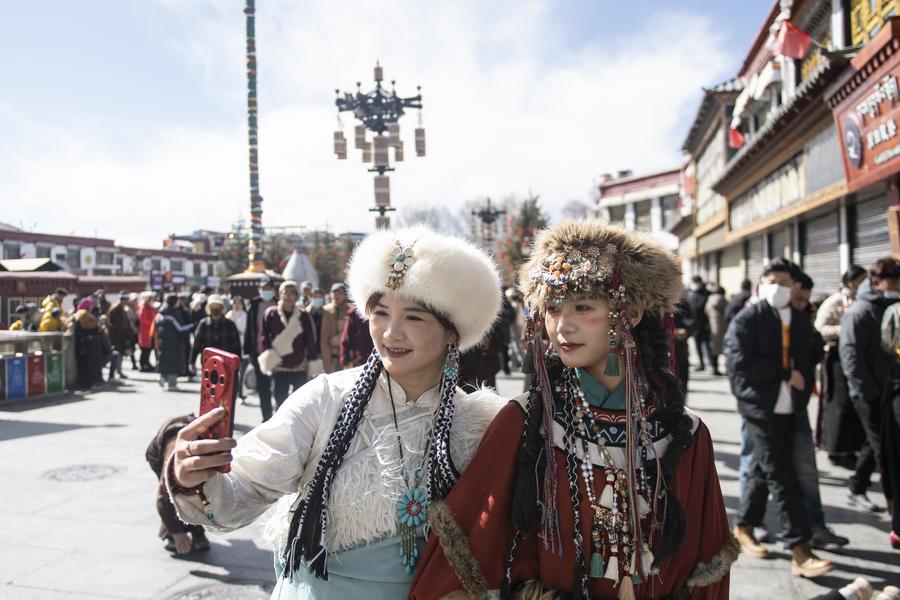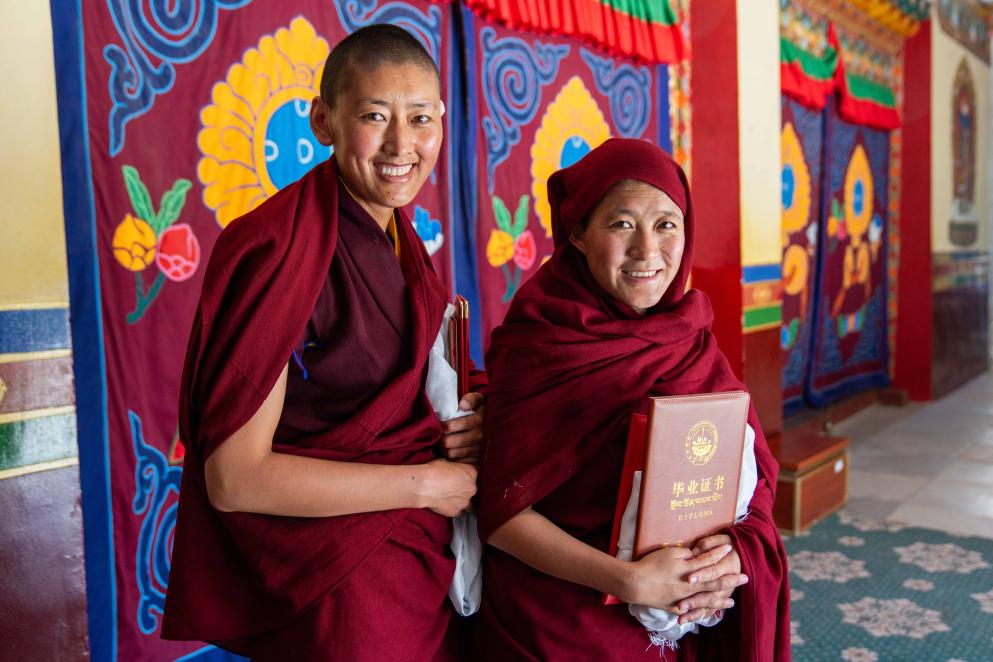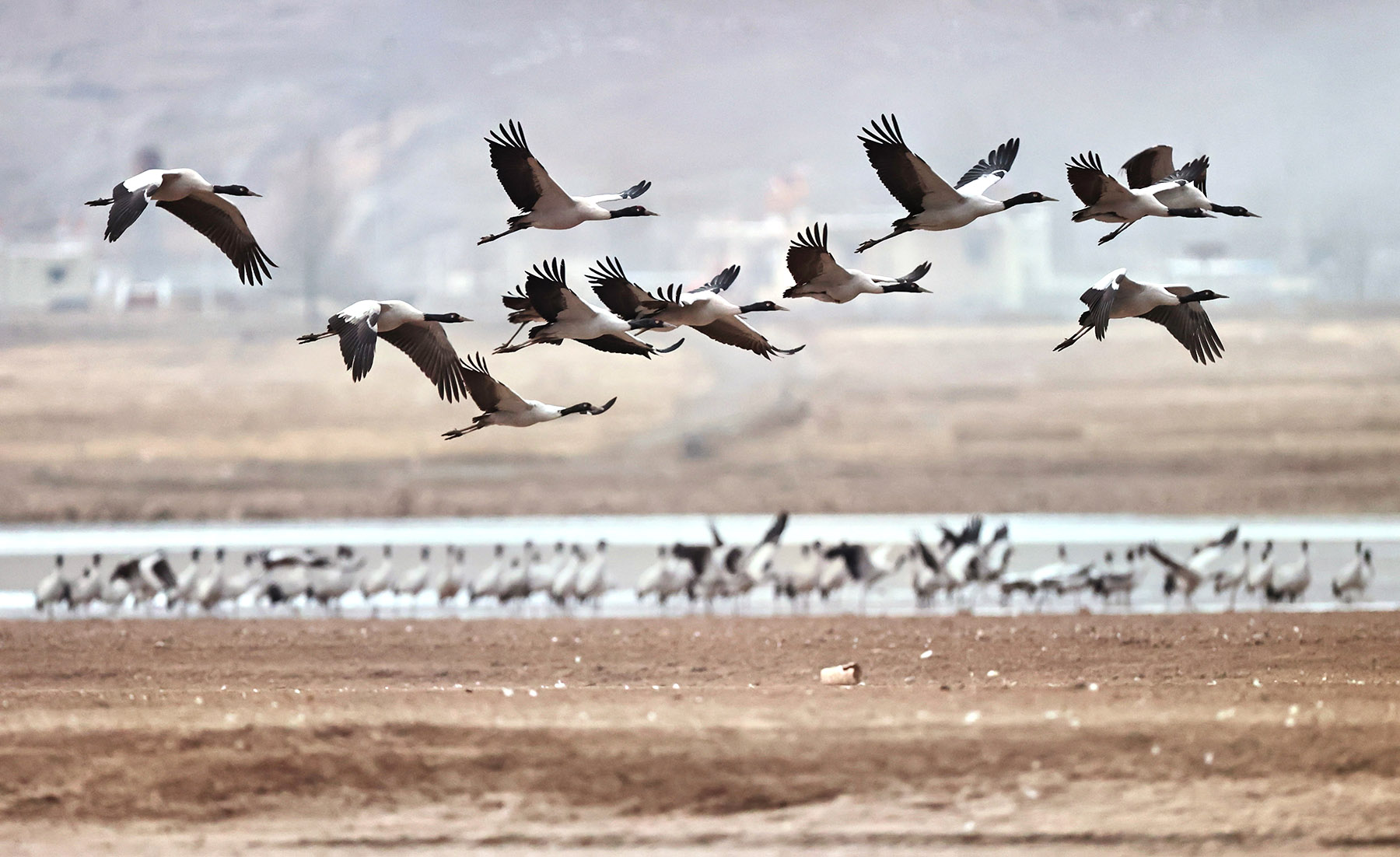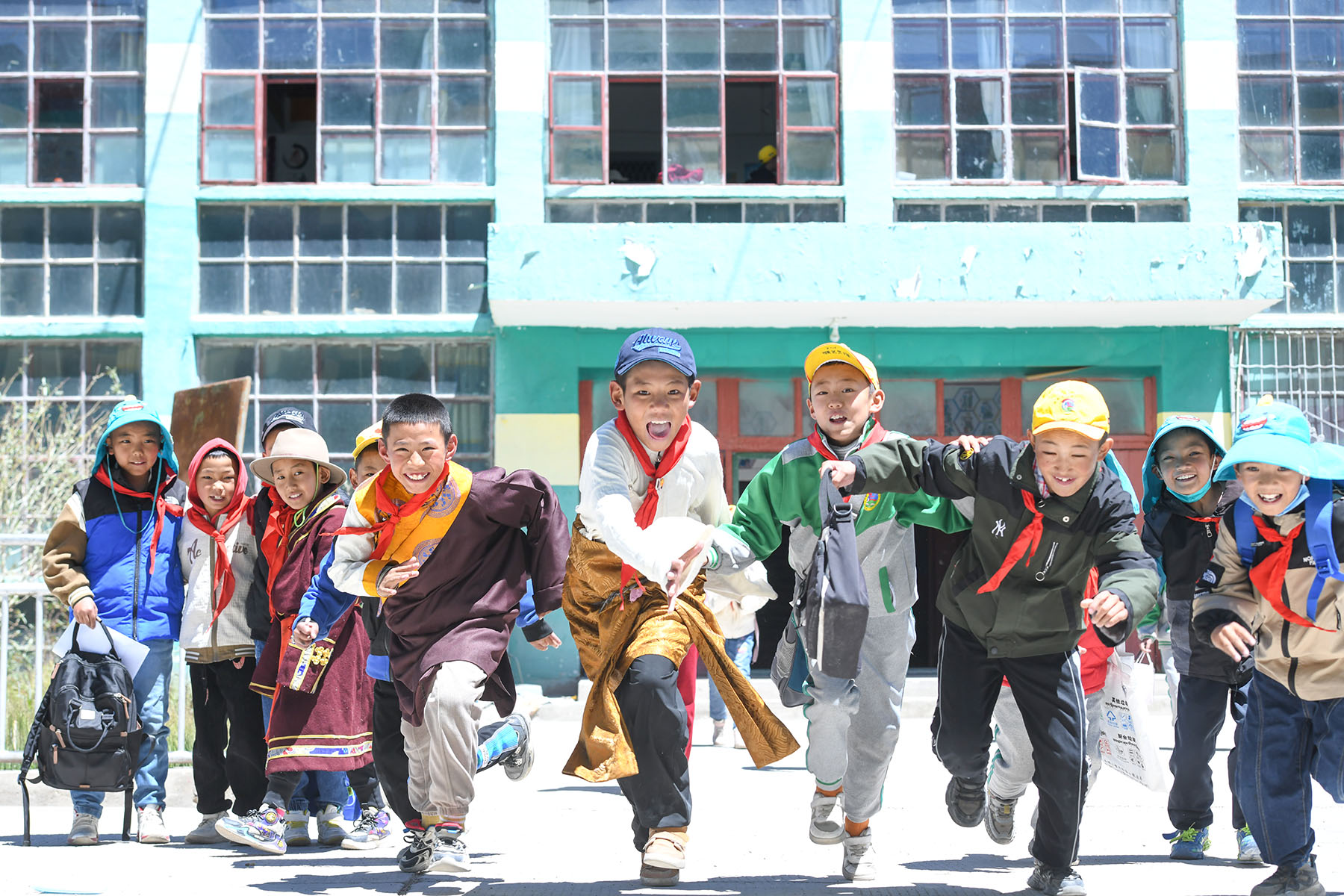
LHASA - All-round and historic progress has been made in the human rights cause in Southwest China's Xizang autonomous region, according to a white paper released on Friday.
The document, titled "Human Rights in Xizang in the New Era", was released by the State Council Information Office at a press conference held in Lhasa, capital city of the region.
The Communist Party of China (CPC) and the Chinese government have implemented effective measures to develop the economy, improve living standards and people's wellbeing, promote ethnic unity and progress, and protect the basic rights of all the people in the region, it said.
Full text: White paper 'Human Rights in Xizang in the New Era'
Since the 18th CPC National Congress in 2012, respecting and protecting human rights has been made an important part of the Party Central Committee's guidelines for the governance of the region, according to the document.
The CPC has maintained a people-centered approach to human rights and a commitment to ensuring human rights through development, and has vigorously promoted whole-process people's democracy, it said.
The Party has strengthened legal protection of human rights, and coordinated efforts to increase people's civil and political rights as well as economic, social and cultural rights, so as to achieve well-rounded development and common prosperity for all people from all ethnic groups, according to the white paper.
Today, Xizang enjoys political stability, ethnic unity, economic development, social harmony, and amity among different religions, the document said.
READ MORE: Xizang sees greater tourist influx during holiday
Its environment is sound, and local people are content with their work and daily lives. This progress represents a remarkable achievement in protecting human rights on the snowy plateau, it said.
Freedom of belief safeguarded
Lawful religious activities are under effective protection, and every effort is made to satisfy the religious needs of believers in Xizang, it added.
The region has approximately 46,000 Buddhist monks and nuns, 12,000 native Muslims, and over 700 believers of Catholicism.
The central government and governments at all levels in Xizang fully respect the tradition of reincarnation of living Buddhas of Tibetan Buddhism, the white paper said, adding that they strictly follow the Measures on the Management of the Reincarnation of Living Buddhas of Tibetan Buddhism and manage the process in accordance with the law.

Over 98 percent of monasteries and temples now have access to roads, telecommunications, electricity, water, radio and television, noted the white paper, adding that the government allocates over 26 million yuan (about $3.6 million) per annum to cover medical insurance, pension schemes, subsistence allowances, accident injury insurance, and health check expenses for all registered monks and nuns.
ALSO READ: Xizang advances ecological civilization to increase growth
Meanwhile, the right to study and use the Tibetan language is also guaranteed in Xizang, said the document.
All resolutions and regulations adopted by the People's Congress of Xizang and all general-purpose official documents and public notices released by people's governments at all levels in the region and their subordinate departments are published in both standard Chinese and Tibetan. Courses on both standard Chinese and Tibetan are taught in primary and secondary schools in Xizang.
By the end of 2024, Xizang had 17 periodicals and 11 newspapers in the Tibetan language and had published 46.85 million copies of 8,794 Tibetan-language books, according to the white paper.
High-quality education
Boarding schools play a vital role in providing education to children from remote farming and pastoral areas in Xizang, the white paper said.
In these areas, accessing schools can be challenging due to high altitude, harsh natural environments, extremely low population density and long distances. To address this problem, Xizang has followed the same practice as the rest of the country in accordance with the Compulsory Education Law, providing accommodation service and covering all the boarding, lodging, and basic study expenses for the pupils in some schools, it said.
ALSO READ: End of serfdom in Xizang worth celebrating
The measures aim to protect the equal rights of students from all ethnic groups to high-quality education, it added.
By 2024, the gross enrollment rate of preschool education reached 91.33 percent in the region, the completion rate of nine-year compulsory education was 97.86 percent, the gross enrollment rate in senior high schools reached 91.56 percent, and the gross enrollment rate of higher education was 57.81 percent, according to the white paper.

Prioritizing eco-environmental conservation
Xizang has always prioritized eco-environmental conservation and kept reminding itself that conserving the ecology of the Qinghai-Tibet Plateau is the greatest contribution to the survival and development of the Chinese nation, said the white paper.
The region is committed to maintaining harmony between humanity and nature in modernization. It also strives to continuously improve eco-environmental governance and protect biodiversity on the Qinghai-Tibet Plateau.
A rural greening action saw 10.31 million trees planted across 2,261 administrative villages, while an afforestation project in the mountains to the north and south of Lhasa has led to 10.58 million mu (705,333 hectares) of forests being planted. Through these large-scale greening programs, the per capita green area in Xizang has markedly increased and the eco-environment of urban and rural areas has continued to improve, it added.
READ MORE: China's progress in human rights praised
Between 2018 and 2024, a total of 95.4 billion yuan (about $13.3 billion) was allocated as subsidies and rewards for ecological protection across the region. From 2016 to 2024, an average of 516,000 jobs for eco-environmental protection were created annually, it said.
Various rights protected
Xizang has improved the protection of the economic and social rights of local people, and the rights of people to an adequate standard of living, education, work, health, and social security are better guaranteed, said the white paper.
Since the 18th National Congress of the Communist Party of China in 2012, Xizang has carried out an array of measures to alleviate and eradicate poverty.
The measures include boosting new industries, relocating the poverty-stricken population from uninhabitable areas, recompensing the poor for their loss due to eco-environmental conservation, improving education, and securing social assistance to meet people's basic needs, according to the white paper.
By the end of 2019, all 628,000 registered impoverished people in the region had been lifted out of poverty. In 2024, the per capita net income of those lifted out of poverty in Xizang increased by over 12.5 percent.
READ MORE: Tibetan keeps close watch on 'sacred' black-necked cranes
Citizens' rights to vote and to stand for election are also strictly protected in Xizang, the white paper added.
Since 2012, two elections at the county and township levels have been held in Xizang to elect people's congresses, in which more than 90 percent of eligible voters -- 100 percent in some places -- in the region participated in these direct elections, it said.

At present, there are 42,153 deputies to people's congresses at four levels in the region, 89.2 percent of whom are from the Tibetan or other ethnic minority groups, the document said.
Faster travel, faster internet
The road length in Xizang nearly doubled in 12 years, reaching 124,900 km by the end of 2024, up from 65,200 km in 2012, said the white paper.
During the period, the region poured 401.93 billion yuan (around $56 billion) into fixed-asset investment for major highway projects, according to the white paper.
By 2024, the region had 1,359 km of in-service railways, almost twice the 701 km recorded in 2012. It also operated 183 flight routes connecting the region with 78 domestic and international cities.
Additionally, the fifth-generation wireless network is accessible in every town and township in Xizang.
ALSO READ: China's Xizang opens first flight linking Hong Kong
The service had also reached 70 percent of administrative villages in the region by 2024, said the document, adding that there were 17,881 5G base stations in the region.
A total of 2.14 million mobile phone users, or 60.5 percent of the total in Xizang, were on 5G, according to the white paper. By 2024, all administrative villages in the region had access to fiber optics and 4G connections.


